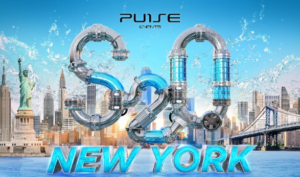In June of 2010, the 14th annual Electric Daisy Carnival (EDC) was hosted at its former home in the Los Angeles Coliseum. The lineup, which boasted huge names like Avicii and Swedish House Mafia, drew a crowd of roughly 140,000 people over a two-day event. One of those attendees was 15-year old Sasha Rodriguez, who went to the festival with a group of friends. After taking Molly ( Also known as MDMA, or Ecstasy), Rodriguez went into respiratory arrest and eventually died from multiple organ failure. The repercussions of Sasha’s tragic death forever forced EDC out of LA, and also peaked public concern about the safety of raves and large-festivals in general.
Over 13 years have passed since Sasha’s death, yet we continue to hear about overdoses and drug-related deaths at festivals year after year. This persisting problem raises an important question: what is being done to prevent substance-related deaths at festivals? Although lawmakers and legislation have provided significant challenges to the movement, policies are changing rapidly to allow harm reduction to take place in the dance music scene. Around the country, large-scale production companies have recently begun to partner with nonprofits and agencies to introduce safer raving practices and the idea of harm reduction to festival-goers.
Risks Of Doing Drugs At Festivals
If you’re like many ravers and festival goers, you love to be deep in the crowd, closer to the wubs and excitement. Additionally, If you’re a local to AZ, you know all too well the dangers of overheating while at outdoor venues (and even indoor, I’m looking at you Sunbar). Dehydration, exhaustion, and heat-stroke are risks that can be exasperated when substances come into the mix.
While drug-use is not unique to raves and festivals, research shows there is an increase in the risks associated with drug-use due to the physical and emotional intensity of the environment. The lights, lasers, and hours of dancing all are components of what make festivals feel like a magical place. On the flip side there is often lack of sleep, extreme weather fluctuations, and many of us are surviving off a few chicken tenders. With these factors in play, the potential of drug-related adverse effects are heightened.
These increased risks don’t just apply to illicit substances. In 2016, alcohol was involved in over 50,000 drug-related poisonings in the U.S.,. In 2013, the last day of Electric Zoo was canceled due to 22 drug-related emergencies on the previous days. Of these emergencies, 21 had used drugs or alcohol. 11 of these patients had used alcohol with or without other drugs, and 12 had used strictly other substances.
The Principles of Harm Reduction
So what is Harm Reduction? The National Harm Reduction Coalition defines it as a collection of strategies and ideas aimed at the reduction of harm associated with substance use. Harm Reduction also embodies a social justice movement built on the foundation of a belief in the rights and respect for those who choose to use illicit substances. The movement has been around for decades, but has really picked up steam over the most recent years. This is not without reason; In 2022, over 100,000 people died of drug-related deaths.
Starting A Conversation
If you’ve been to an Insomniac event or show in recent years, you might have come across information about the dangers of fentanyl and the potential of it appearing at festivals. My first experience with this was inside Camp EDC this year. Huge signs stated in red font ‘Fentanyl Alert’, and grim warnings were on all the camp street corners.
This implementation was likely due to the 2022 partnering of Insomniac with foundation End Overdose. The non-profit’s website emphasizes their work in ending overdoses through education, awareness, and medical care.
Organizations like DanceSafe and the Zendo Project are also working to start the conversation at raves and dance music events across the U.S.,. with booths for each agency popping up at curated events by Excision and festivals put on by The Do LaB.
Having booths centered around harm reduction not only opens a dialogue about the risks of drug-use, but promotes and brings awareness to other social issues within the rave community. Information about consent, hearing protection, and drug testing are all highly important to the safety of present and future events.
Barriers To Harm Reduction
While advocacy grows for harm reduction, so do challenges to the movement legislatively and within the scene.
Take, for instance, The RAVE Act of 2003. Standing for ‘Reducing Americans’ Vulnerability to Ecstasy’, the act prohibits venues and production companies from knowingly leasing, renting, or using a space intended for controlled substance use. Now nearly 20 years old, many criticize the act as a primary reason there are not better safety measures at raves and festivals. Amend The Rave Act is one of the organizations calling for reform, promoting the idea that it endangers public safety at music events. If legislation like this were not in place, production companies might feel more comfortable with implementing fentanyl testing stations, having Narcan readily available for festival-goers, or providing information on the risks of laced substances.
Last year, I attended Electric Forest 2022, a long-standing fest put on by Madison House Presents and Insomniac. My friends and I spent lots of time exploring the vendor booths, buying trinkets and talking to vendors from around the country. One vendor that I expected to see was a reoccurring resident, DanceSafe. DanceSafe and similar organizations cannot outright provide drug-testing stations, but their booths will often boast informative pamphlets, free ear plugs, and free protection for other activities (if you catch my drift). However, I soon learned their booth was shut down on Friday and remained closed for the rest of the festival weekend. The DanceSafe team posted about their experience, highlighting the extremely delicate line that harm reduction organizations have to ride to work within festival grounds. The notion that organizations dedicated to public safety have to operate under the table is troublesome.
There are also state-by-state challenges to consider regarding drug laws. For example, in Pennsylvania it’s a misdemeanor charge to even possess fentanyl test strips. In Massachusetts, it is legal to possess fentanyl testing strips, but not to administer. Arizona offers a unique stance on drug testing and education, with Gov. Doug Ducey signing a bill in 2021 that legalizes both the use and administering of fentanyl testing strips. Similarly, it is legal to carry Narcan (Naloxone) and administer it due to the Good Samaritan Law. Even so, without amendment to the RAVE act and similar legislation, promoters and venues are hesitant to implement new policies at events and shows.
So, What Can I Do?
If you’re reading this article and a member of the fvm, chances are you have a passion and love for the EDM community. While we cannot deny the fact that drug-use will occur within the scene, we also don’t have to accept that medical emergencies and tragic deaths will be an ever-growing concern. There are some safety measures you can take if you choose to partake in any kind of alcohol or drug use.
- If you use a substance, have a plan
- Establish a buddy system, when possible
- Eat something before going out
- Hydrate before going out, and while out
- Take breaks from the crowd
- Check in on your friends
- Test your substances
- Carry Narcan or Naloxone
If you feel an urge to learn more about implementing harm reduction strategies at events to come, you can sign petitions through Amend The RAVE Act or even volunteer to join a chapter of DanceSafe.
For many, raves and festivals are a safe space and an opportunity to bond with others over our shared love of music. Everyone deserves the opportunity to dance the night away and the opportunity to return to their home safely after it ends. By advocating for ways to protect ourselves and others, we can continue to grow, have fun, and learn together in festivals and raves to come.
Editor’s Note: Moon Lvnding discourages illicit drug use at music events and festivals.













